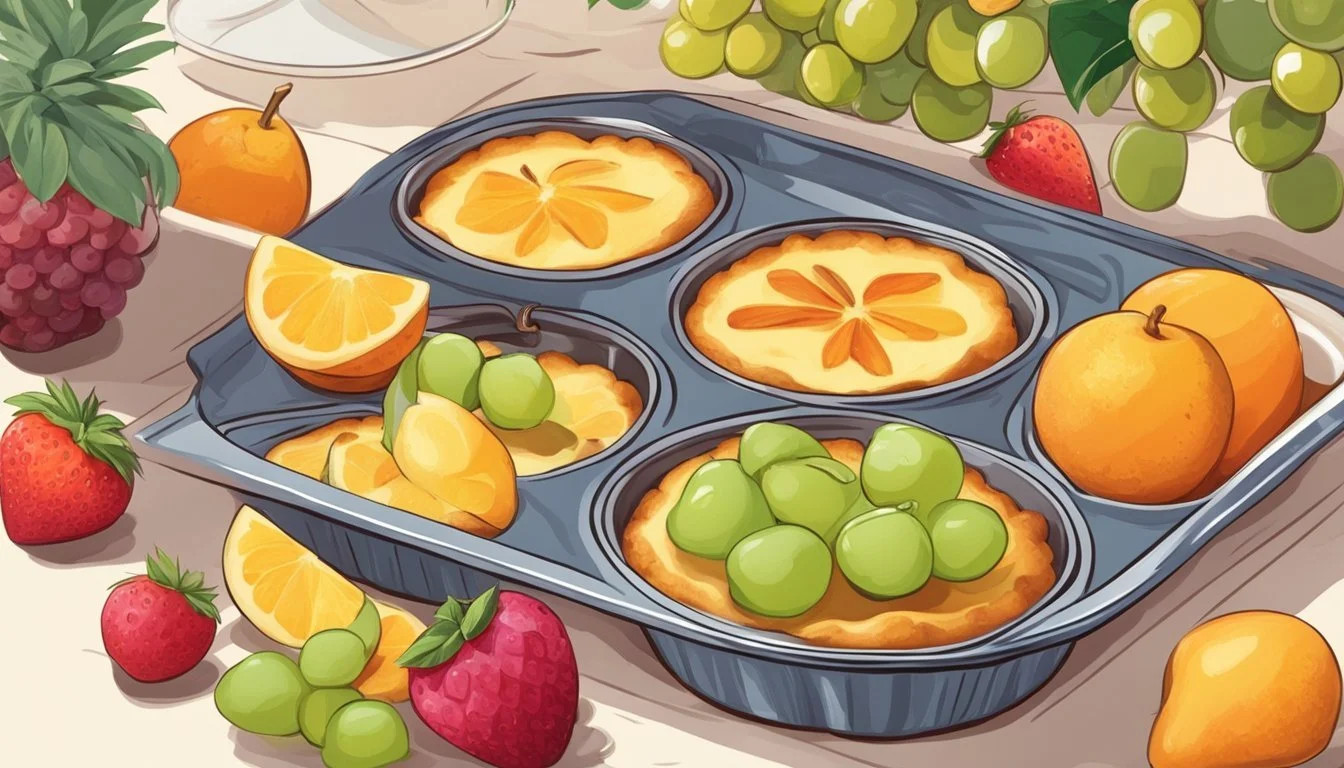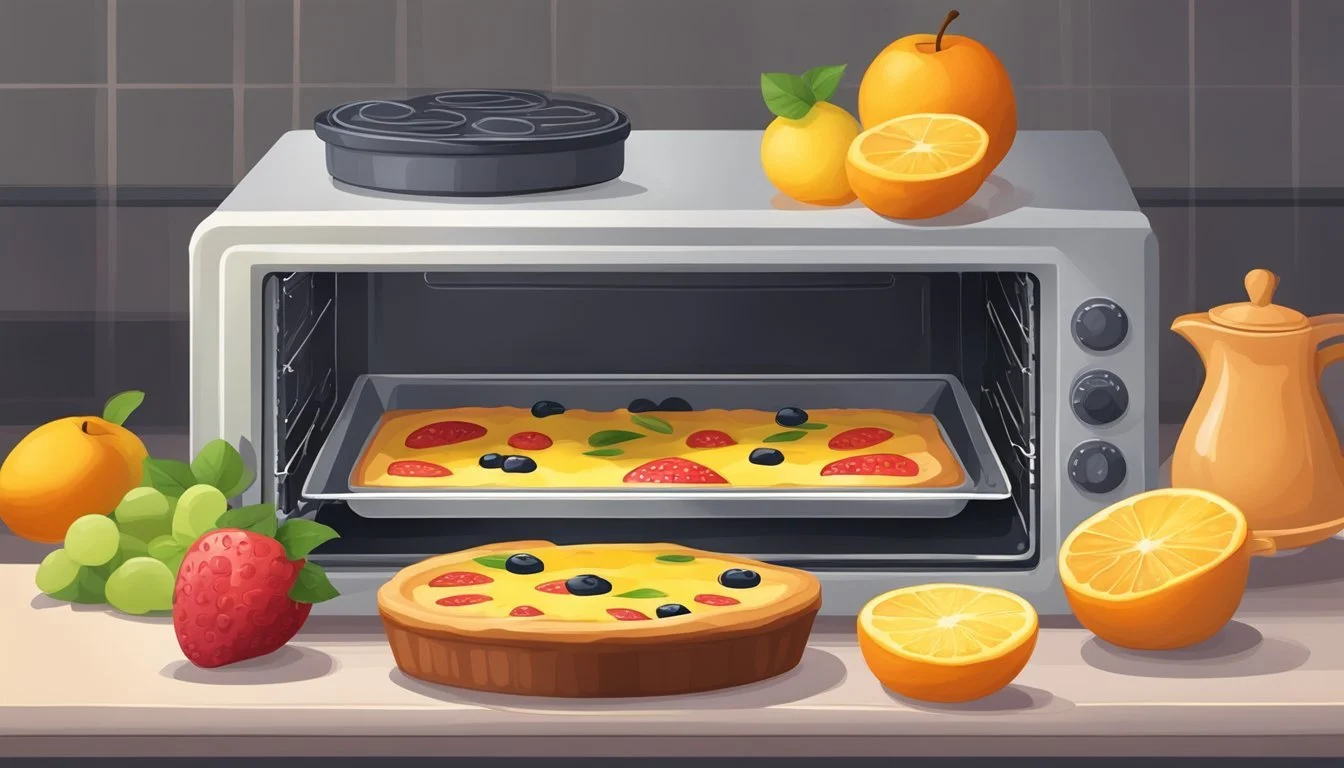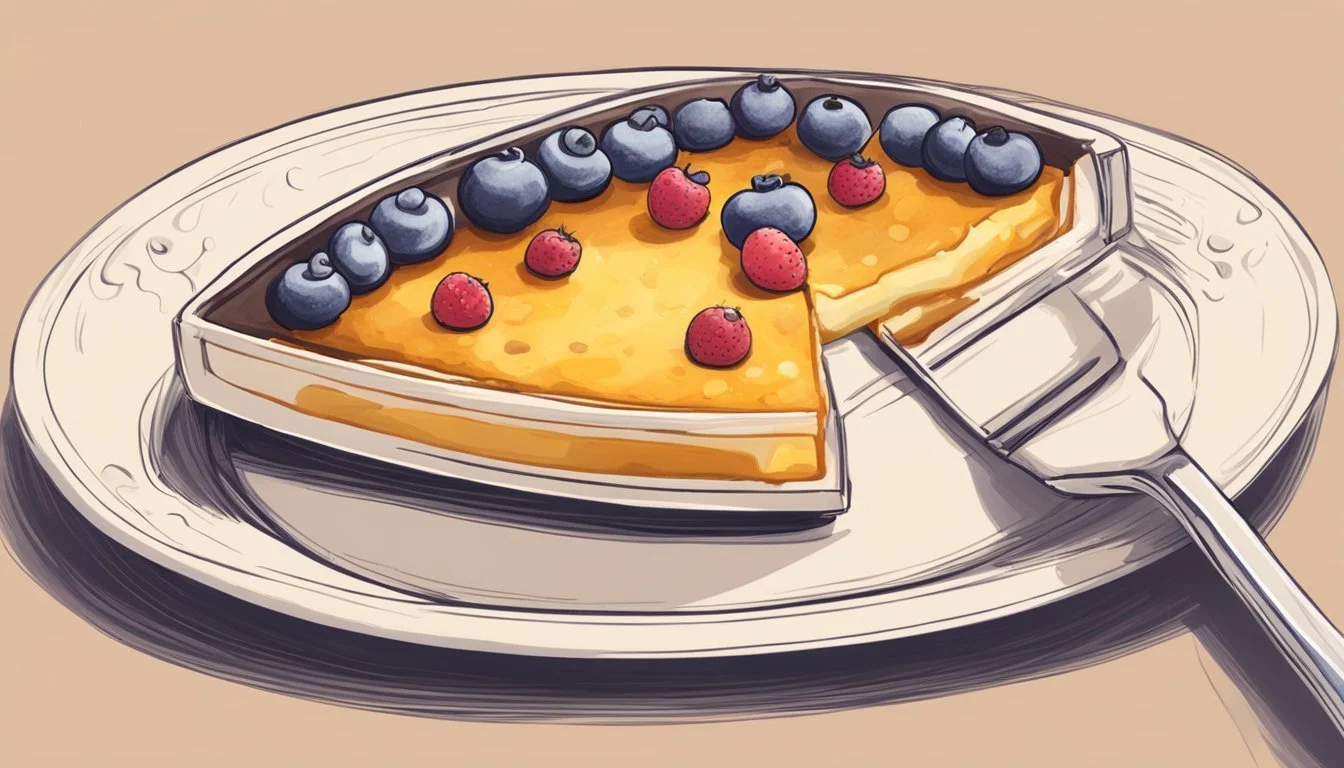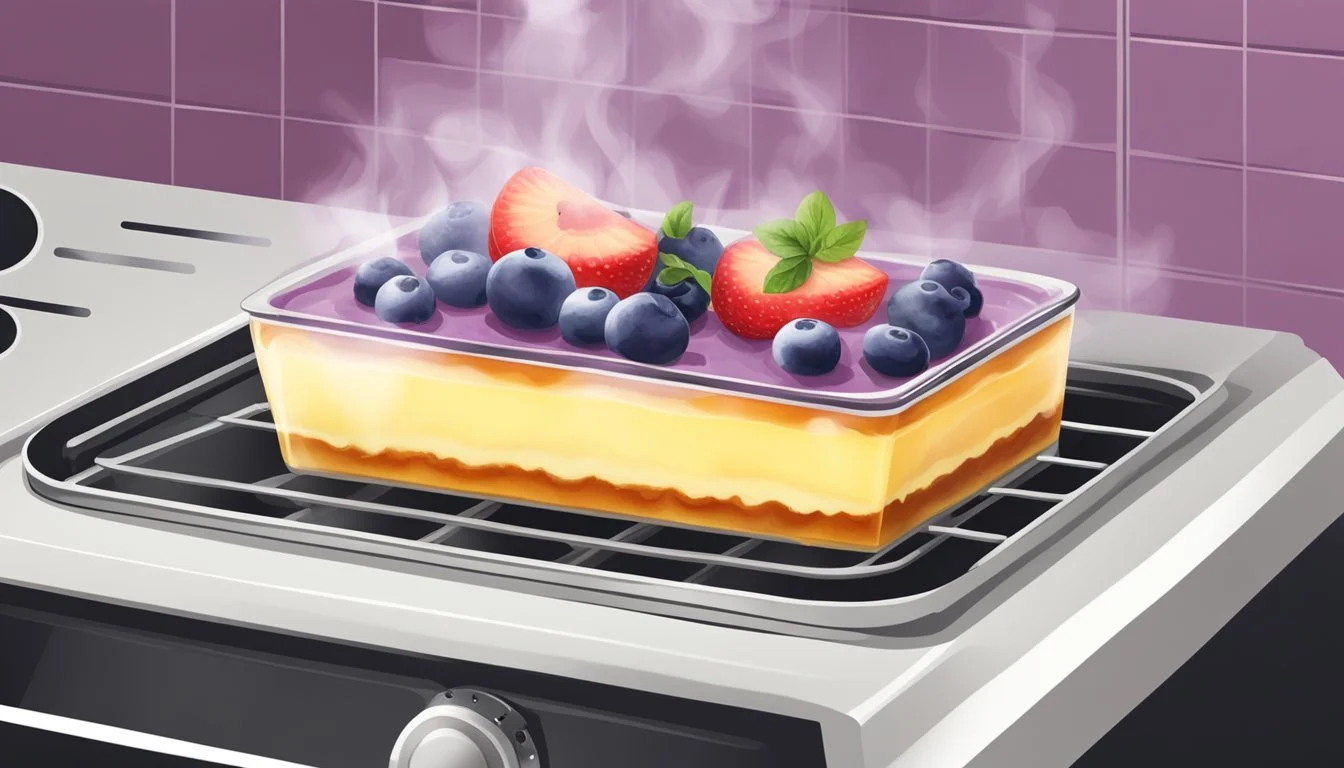Best Way to Reheat Clafoutis
Ensuring Perfect Texture and Flavor Retention
Clafoutis, a cherished French dessert, showcases the delightful interplay of fruit flavors and a luscious, custardy texture. Often enjoyed warm, straight from the oven, this dish can present a challenge when it comes to reheating without compromising its delicate taste and mouthfeel. The key to maintaining the integrity of a clafoutis lies in a gentle reheating method that respects the dessert's custardy center and the succulence of its embedded fruits (What wine goes well with fruits?).
When reheating clafoutis, the objective is to warm it through just enough so that the flavors are reinvigorated, but the structure remains unaltered. Achieving this balance ensures that each bite offers the same comforting experience as when it was first baked. It is essential to avoid high temperatures that can toughen the texture or cause the fruit to become overly mushy, ensuring the dessert remains true to its original form.
Strategically reheating clafoutis calls for patience and precision, focusing on even warmth distribution without reaching temperatures that would cook it further. A low and slow approach allows the food's inherent flavors to blossom while preserving the creamy consistency that characterizes an authentic clafoutis. Through careful temperature control, one can revive this classic dessert, ensuring it retains the qualities that make it a beloved treat.
Understanding Clafoutis
To appreciate the best method for reheating clafoutis, it's important to understand its origins and the classic ingredients that make up this French dessert.
Origins and Cultural Significance
Clafoutis originated in the Limousin region of France. It is a baked dessert often served as a comfort food within French cuisine. The dish has spread in popularity and is now found in many regions of France and around the world. Traditionally made with black cherries, the fruit's presence is a distinguishing characteristic of the dish.
Classic Ingredients
The backbone of clafoutis is a custard-like batter made from staple ingredients:
Eggs: Provide structure and richness to the batter.
Milk: Often whole milk is used for its creamy texture.
Sugar: Sweetens the batter, balancing the tartness of the cherries.
Flour: A small amount is included to thicken the batter and create a tender texture.
Cherries: Black cherries are the classic choice, but variations may include other fruits.
Vanilla: Typically, vanilla extract is added for its warm flavor that complements the creamy custard and fruit.
The ratio of these ingredients is crucial in crafting the semi-firm yet creamy texture that clafoutis is known for. The cherries are laid in a buttered dish, and the batter is poured over them before baking. The result is a dessert that uniquely bridges the gap between a dense cake and a delicate custard, underscored by the burst of fruit flavor.
Preparation Basics
Creating a delectable clafoutis requires attention to detail, from crafting the perfect batter to selecting high-quality ingredients. Texture and flavor hinge on these groundwork steps.
Making the Batter
In clafoutis preparation, the batter serves as a custard-like base that envelops the fruit. It begins with a blend of all-purpose flour and granulated sugar that provides structure and sweetness. To this, one incorporates milk (for moisture and creaminess) and eggs (often large eggs, providing the necessary binding property and richness). The incorporation of pure vanilla extract and, in some cases, lemon zest or almond extract, lends the clafoutis its subtle signature flavors. This mixture should be whisked until smooth to ensure an even consistency throughout the dish.
Selecting the Right Fruit
Choosing the fruit for clafoutis is not just about flavor, but also how it interacts with the batter during baking. Traditionally, black cherries are used, but other seasonal fruits may be employed. The fruit should be ripe but not overly soft, as it must hold its shape and not disintegrate into the batter. Before being layered into the baking dish, the fruit can be tossed lightly with flour to prevent it from sinking.
The Importance of Egg Quality
Eggs are essential to the structure and texture of clafoutis, acting as an emulsifier and thickening agent for the batter. Using high-quality, preferably organic and free-range large eggs, will not only enhance the flavor but also support a more consistent and stable custard formation. The ratio of eggs to other liquid ingredients, such as milk, influences the final texture, making it imperative to use the exact quantities specified in reliable recipes.
Baking Technique
To optimally reheat clafoutis, one must carefully consider the choice of baking dish, oven settings, and the duration of baking. These elements are crucial in achieving a perfectly warm dessert with a custardy texture and vibrant fruit flavor.
Choosing the Correct Baking Dish
Selecting an appropriate baking dish is vital for reheating clafoutis. A cast iron skillet or ceramic baking dish is preferred because they offer even heat distribution. The dish should be lightly coated with melted butter to prevent sticking and to enhance flavor. Dishes with shallow sides are ideal to ensure the clafoutis heats evenly.
Oven Settings and Temperature Control
The oven should be preheated to a moderate temperature before reintroducing the clafoutis. A setting between 325°F to 350°F is recommended to warm the dessert without overcooking it. Maintaining an even temperature ensures the clafoutis retains its delicate texture and fruit integrity. Using whole milk in the batter can contribute to a creamier consistency when reheated.
Determining Ideal Baking Duration
To preserve its custardy heart and prevent drying out, clafoutis should be reheated only until it is just set. The baking time may vary depending on the thickness of the dish but typically ranges between 10 to 15 minutes. One should look for a golden hue as a visual cue. A knife inserted in the center should come out clean, indicating that the clafoutis is pleasantly warmed through.
Achieving Desired Texture
When reheating clafoutis, maintaining the delicate custardy texture and preventing it from becoming rubbery or overly heavy is paramount. The key lies in the gentle and even reheating method.
Custard Consistency Considerations
To ensure the clafoutis retains its signature custard-like texture, one must consider the custard's unique thermal properties. Custards are egg-based and require a careful balance of heat. Too much heat can cause the proteins in the eggs to seize, resulting in a rubbery texture, while insufficient heat won't properly warm the dish.
Temperature: A moderate oven temperature, around 350°F (175°C), is essential to warm the clafoutis without cooking it further.
Method: An even heat distribution is crucial. The clafoutis should be placed in an ovenproof dish and heated until just warmed through. This process should take approximately 10-15 minutes.
Protection: Covering with foil can help retain moisture and ensure the clafoutis doesn't dry out, which preserves its custardy feel.
Moisture: A splash of milk or cream over the clafoutis before reheating can aid in reviving the moistness and soft texture.
It's important to remember that clafoutis is not forgiving to high, direct heat. One should always err on the side of lower temperature and shorter heating time to keep the custardy texture intact.
Preserving Fruit Integrity
Retaining the original flavor and texture of fruits is pivotal for reheating clafoutis effectively. The approach to incorporating fruits affects how the final dish, particularly its integrity, is preserved during reheating.
Incorporating Fruits into the Batter
To ensure the custardy texture and rich flavor of clafoutis, special care must be taken when incorporating fruits into the batter. Black cherries are the traditional choice, known for their profound sweetness and slight tartness. When using fresh cherries, one must pit them to avoid any hardness in the texture. Berries, plums, peaches, and nectarines provide a variety of complementary flavors and maintain their structural integrity well when baked. For firmer fruits like apples and pears, a pre-cook stage may be beneficial to soften them and enhance their natural sweetness.
When incorporating frozen cherries or other frozen fruits, one should account for the extra moisture. Frozen fruits do not require thawing prior to baking as this could result in a soggy texture. Instead, fold frozen fruits directly into the batter to maintain their shape and prevent the release of excessive juices. Lastly, when mixing the fruit and batter, do so gently to avoid crushing the fruit, which could blend too much fruit juice into the batter, leading to an uneven texture.
Reheating Clafoutis
When reheating clafoutis, it's crucial to employ methods that maintain its custardy texture and the integrity of its fruit flavor. The goal is to achieve a dessert that is slightly warm, enhancing the dish's overall taste and comfort.
Best Methods for Reheating
Oven Reheating: To preserve the clafoutis's texture and flavor, reheating in the oven is preferable. Preheat the oven to a low temperature—around 275°F (135°C). Place the clafoutis in an oven-safe dish, cover it loosely with foil to prevent it from drying out, and warm it for about 10-15 minutes. The gentle heat helps to warm the dessert without cooking it further.
Microwave Reheating: Although not ideal, the microwave can be used for convenience. To reheat clafoutis in the microwave, it should be at room temperature. Heat it in short intervals of 15-20 seconds to prevent overheating, checking the texture between intervals to ensure it remains custardy and does not become rubbery.
Preventing Texture Loss
Room Temperature Resting: Before reheating, let the clafoutis come to room temperature. This will ensure more even warming and protect the texture.
Moisture Retention: If using the oven, a pan of water placed below the dish can add moisture to the environment, aiding in keeping the clafoutis moist.
Covering: Whether using an oven or microwave, covering the clafoutis can prevent the top from becoming too dry or crusty, thereby preserving the dessert's creamy interior.
Serving Suggestions
When reheating clafoutis, the goal is to maintain its soft, custardy texture while enriching the fruit flavor. Proper accompaniments and presentation are key to enhancing the overall experience.
Accompaniments and Toppings
A dusting of powdered sugar can elevate the flavor while adding a subtle sweetness. Cream plays well with the dessert's texture, and options include:
A dollop of whipped cream
A scoop of vanilla ice cream for contrast
Drizzle of heavy cream for added richness
Incorporating almond extract into the toppings can mirror flavors traditionally found in the batter, amplifying the overall profile. Fruits like raspberries, blackberries, and strawberries offer a fresh, tart contrast to the sweet, yielding cherries within.
Presentation Tips
Presentation is crucial for an appetizing serving of clafoutis. Consider the following:
Garnish with fresh berries (raspberries, blackberries, and sliced strawberries) for vibrant color and texture.
Place a garnish of mint leaves for a pop of color and a hint of freshness.
Serve in a manner that allows the custard to be the star, with ice cream or cream on the side rather than overtop, to ensure the clafoutis retains its warmth and texture.
Use dessert plates that contrast in color with the clafoutis, making the servings visually stand out.
Variations and Substitutes
When reheating clafoutis, it's important to consider the alterations in the fruit and the recipe base, as they can affect both texture and flavor. Substitutions can be made for dietary needs without compromising the classic qualities of a clafoutis.
Alternative Fruits and Flavors
Clafoutis traditionally features cherries, but one can easily substitute with a variety of fresh fruits to cater to personal taste or seasonality. Berries such as strawberries, blueberries, or raspberries make excellent alternatives, offering a similar texture while infusing a different, yet delightful flavor profile. When using alternative fruits, one might need to adjust the amount of granulated sugar to balance the natural sweetness or tartness of the fruit. Additionally, the use of vanilla or almond extract can complement the chosen fruit. For an aromatic twist, one could even incorporate citrus zest.
Fruit Variations:
Berries: Adjust sugar to suit the berry's acidity.
Peaches or Apricots: Cook slices slightly to soften before baking.
Citrus Zest: Add for enhanced aroma.
Gluten-Free and Dairy-Free Options
Aiming to cater to those with dietary restrictions, one can adapt the base clafoutis recipe. Replace traditional wheat flour with gluten-free flour options like almond flour or a gluten-free baking mix for a worry-free dessert experience. This not only caters to those avoiding gluten but also can enhance the almond flavor. For a dairy-free version, utilize alternatives such as almond milk or lactose-free cream. Each substitute should be utilized in equal measurements to the original ingredient to maintain the custardy texture that clafoutis is celebrated for.
Base Recipe Substitutions:
Gluten-Free Flour: Equivalent measure to wheat flour.
Almond Milk: In place of cow's milk, same volume.
Lactose-Free Cream: Substitute for dairy cream if necessary.
Nutritional Information
When considering reheating clafoutis, understanding its nutritional profile is key for those mindful of their diet. This section examines calorie content and health implications associated with this dessert.
Calorie Count and Health Considerations
A standard serving of clafoutis encompasses a range of caloric values due to variations in ingredients and portion sizes. Typically, a slice contains:
Calories: 200-400
Sugar: Moderate-high amount, depending on the recipe
Fat: Contains butter, contributing to total calorie count
A clafoutis recipe usually includes whole milk, eggs, and sugar, which are primary contributors to its calorie and sugar content. The use of whole milk provides a rich taste and contributes to the dessert's custardy texture but also adds to the calorie content. Those watching their calorie intake may consider using lower-fat milk options.
Eggs are not only essential for structure but also add protein to the dish. However, they contribute to the overall calorie and fat content. Replacing with an egg substitute or adjusting the number of eggs can alter the nutritional profile.
Butter adds flavor and ensures a non-stick surface for baking but consider using unsalted butter to control the sodium content. For individuals interested in reducing calorie and fat intake, adjusting the amount of butter or looking for plant-based substitutes could be beneficial.
Consumption should be mindful, especially for those with dietary restrictions related to calorie, dairy, or sugar intake. Moderation is recommended, and dietary modifications can be made to accommodate personal health considerations.
Storage and Shelf Life
When it comes to maintaining the quality of clafoutis, proper storage is key. The shelf life of this dessert varies depending on the method of storage, which can either be refrigeration or freezing. These methods are essential to preserving clafoutis's delicate custardy texture and the integrity of the fruit flavor, making it enjoyable whether it's served at a dinner party or for brunch (What wine goes well with brunch?).
Refrigerating Clafoutis
To refrigerate clafoutis effectively:
Cool: Allow the clafoutis to cool to room temperature before storing.
Cover: Cover it with plastic wrap or place it in an airtight container to prevent it from absorbing odors.
Shelf Life: When refrigerated, clafoutis should be consumed within 2-3 days for optimal texture and flavor.
Freeze-Thaw Cycle for Clafoutis
When freezing clafoutis:
Wrap: Wrap the clafoutis tightly in plastic wrap and then in aluminum foil to protect it from freezer burn.
Time: Freeze for up to one month to retain the quality. Beyond this, textural changes may become more noticeable.
Thawing: Thaw the clafoutis in the refrigerator overnight, rather than at room temperature, to ensure it maintains its custardy texture before serving the meal.
Properly refrigerating or freezing clafoutis can make all the difference in enjoying its flavors and textures when it's time to reheat and serve.
Conclusion
Reheating clafoutis can be accomplished with care to ensure the dessert retains its delightful, custardy texture and the vivid, sweet fruit flavors that characterize this classic dish. Ideally, it is a dessert best enjoyed fresh, but with these guidelines, one can serve it with confidence, even after storage.
For optimal results:
Microwave: Though not recommended, if necessary, use a low power setting and heat in short bursts to avoid overheating.
Oven: Preferable for an evenly warmed, tender clafoutis. Preheat the oven to 275°F and cover with foil to maintain moisture.
Serving Size: Heat individual portions, as they warm more evenly and quickly, reducing the risk of drying out the clafoutis.
Remember, a clafoutis is a versatile dessert that is easy to make and perfect for various occasions, from a summer brunch to a dinner party dessert. It's a confident addition to any table that promises a gourmet experience with its creamy texture and rich flavor.
Maintaining the integrity of the clafoutis when reheating allows one to fully appreciate the simplicity and elegance of this dessert, reassuring both the cook and guests of a delightful end to a meal.













